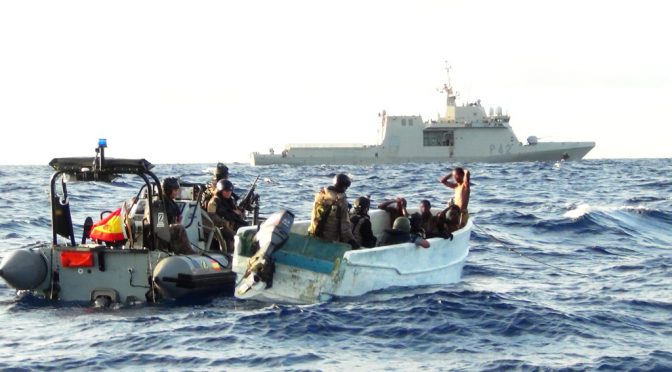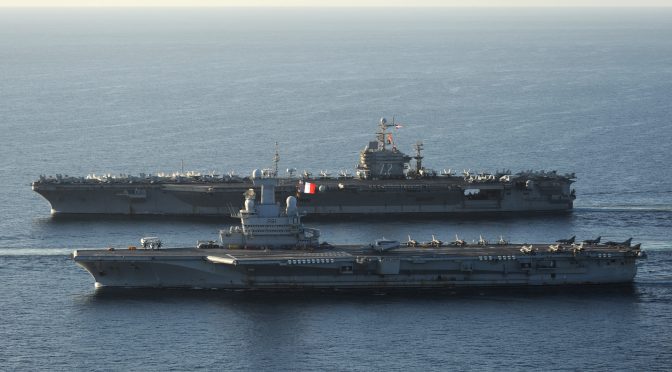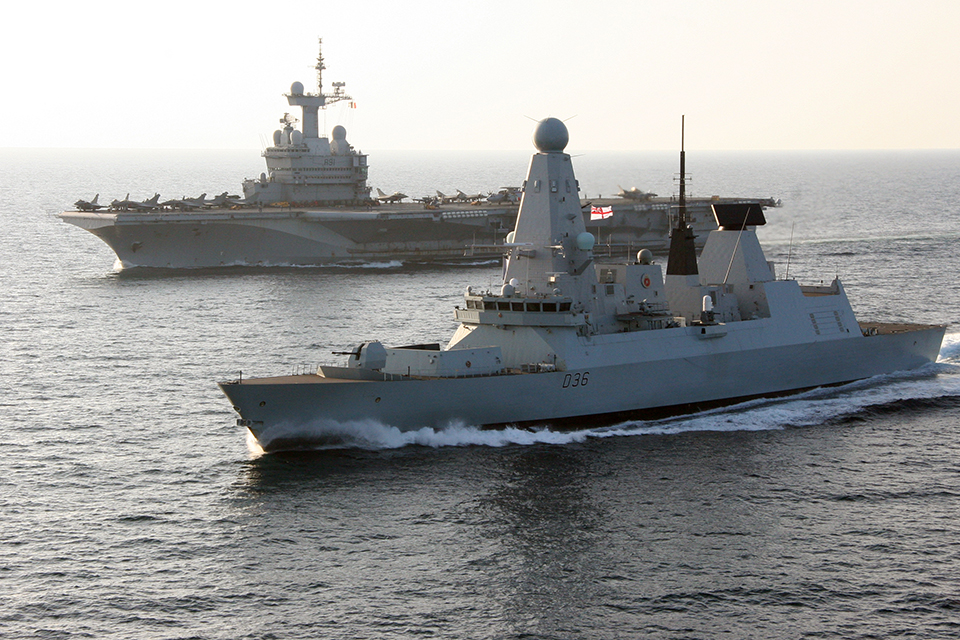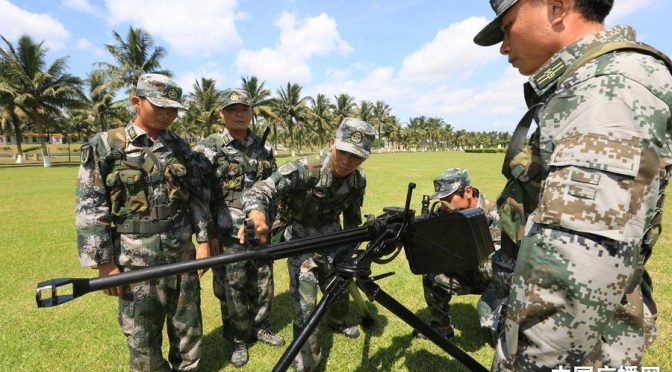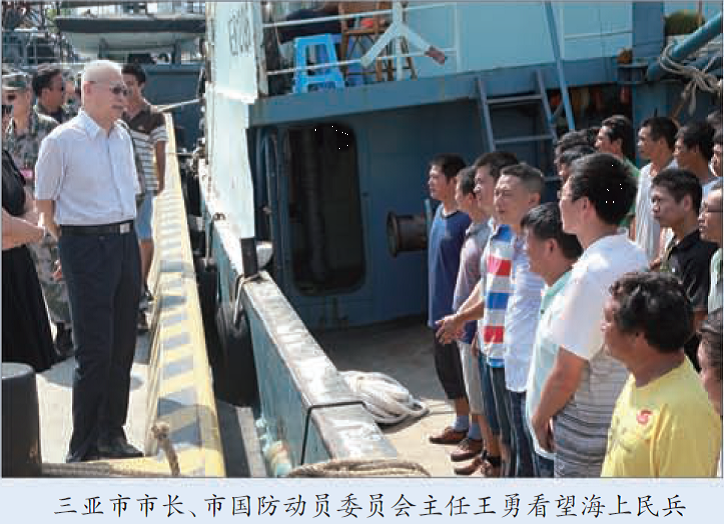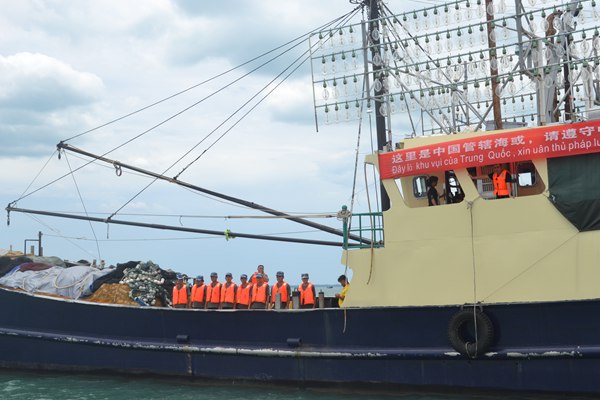By Evmorfia-Chrysovalantou Seiti
Introduction
The European Union represents the latest stage of the larger European integration that began at the end of World War II, initially by six Western European countries to promote peace, security and economic development. Undoubtedly, European countries managed to overcome their dark past and the cruelty of World War II; today, the European Union has 28 member states, including former communist countries of Central and Eastern Europe. Member states have pooled sovereignty in certain policy areas and harmonized laws on a wide range of economic, social, and political issues. These developments prove that European countries realize that the things that unite them are more than the things that divide them, and only through strengthening cooperation and promoting dialogue can they establish the peace and security in European continent and beyond.1
The EU project can be characterized as successful and a cornerstone of European stability and prosperity. The European Union, beyond other areas of cooperation, has developed common foreign and security policies. From 2003 until the present date, the European Union has executed around thirty civilian and military operations on three continents. Their aim was to deal effectively with crises in those regions. Significant examples include peace-building after the tsunami disaster in Indonesia, operations for protecting refugees in Mali and the Central African Republic, and combating piracy in Somalia and the Horn of Africa.
Despite this, a paradox exists. Under the existence of this ambitious policy and after more than thirty operations through the Common Security and Defense Policy (CSDP), political interest in national capitals in acting through the EU’s CSDP has been declining.2 It is important to point out that the reasons member states should have high political interest in acting through the CSDP are more compelling that those that limit shared interest.
Additionally, some European policymakers and analysts have characterized the European integration project as a bicycle, which must keep going forward to avoid falling over. Imbalance can cause a number of problems, such as the Greek debt crisis, the migration and refugee crisis, the June 23, 2016, United Kingdom referendum on EU membership, a resurgent Russia, and heightened terrorism. These are some of the factors that caused the increase of unemployment in many EU countries, economic and political pressures, and the rise of political parties with “Eurosceptic” ideas.3 In one of the toughest periods of its history, some members of the European Union are creating dividing lines instead of trying to provide a common and effective response. Also, the voices and opinions on the future of European Union and the vision of European integration remain divided between those who are supporting the European project (and believe that it will continue to exist despite the serious challenges it is facing) and, from the other side, those who believe that those challenges would bring the collapse of the European project.
This article will focus on the current challenges in the Mediterranean, and how those challenges can be a pillar of integration for the Common Security and Defense Policy of the European Union.
The European Union and the Mediterranean
Why the Mediterranean? The Mediterranean region is characterized by crises and revolutionary changes that affect the Middle East, North Africa, and Southern Europe, as well as trans-Atlantic stakes in these regions. In the meantime, the strategic environment in the Mediterranean is increasingly shaped by forces emanating from outside the region, more specifically from the Levant and the Eurasian and African hinterlands, the Black Sea, and from the Atlantic Basin. As a result, these shifts in the strategic environment have brought the progressive globalization of Mediterranean security.4
The Mediterranean Sea is connected with the Atlantic Ocean through the Strait of Gibraltar and the Red Sea through the Suez Canal. Traditionally, it was a sea passage for internal European trade and imports from Africa and Asia. A powerful coalition and multilateral body such as the EU should adapt to the new challenges and threats, which are a result of the systemic context. The EU’s aim is to ensure stability and to avoid any kind of activities that could damage maritime security or bring danger to the life of individuals.
Although the European Union is not the only interested party, the involvement of external actors is inevitable. This work will analyze the external actors present in the Mediterranean and the schemes of cooperation for preventing a spillover effect, which can not only impact the European continent but global affairs.
The Main Challenges in the Mediterranean
Maritime Terrorism
After September 11, 2001, NATO initiated Operation Active Endeavor. This operation has achieved a high degree of visibility and contributed to “good governance” in the Mediterranean Sea and the straits of Gibraltar.5 Despite this progress, there have been setbacks, including the 2014 hijacking of an Egyptian Navy patrol craft, which took place along the Mediterranean coast 40 miles north of the Seaport of Damietta, and again when 21 Egyptian Christians were kidnapped in two separate incidents in the coastal city of Sirte.6 Both criminal activities were posed by militant groups that have declared allegiance to Islamic State, raising the concern for terrorist activities in Mediterranean Sea, which could cause damage to international shipping and port infrastructure.7
Expanding their activities at sea, terrorists could attack unguarded cruise ships plying Mediterranean waters. Only one attack like this would be enough to spread images of western tourists being murdered and provide the powerful publicity desired. At equal risk are vessels and ports from which terrorists would gain publicity and financial gain. For instance, hijacking a cruise ship provides only one potential scenario. Ungoverned coastal areas of Libya would make a good launch pad for terrorists, although the incidents in Egypt, Algeria and Tunisia can show that much of the Maghreb could provide a point of origin for attackers.8
Irregular Migration
Concurrent conflicts and turbulence from sub-Saharan Africa to Pakistan are generating waves of economic and political migrants desperate to reach the relative prosperity of southern Europe.9 The range of their mobility is striking. Almost 2 million refugees have fled to or through Turkey since the start of the war in Syria, and many more have crossed to Jordan and Lebanon. Over one million Christians have fled Iraq, and over half of a million more have fled from Syria. The annual number of migrants registered as having been arrested and deported in the EU; the figure is somewhere around 500,000. However, there are only estimates of the total number of irregular migrants that reached European maritime borders. The number ranges from 4,000,000 up to 8,000,000.10 Tens of thousands of migrants have crossed the Mediterranean by sea in recent years, 6,000 to Italy alone. Over 3,000 died in the Mediterranean in 2014, comprising the vast majority of the estimated 4,000 migration deaths worldwide in the same period. The Mediterranean region is in the grips of a human security crisis, a crisis affecting the security and the welfare of individuals, unprecedented since the end of World War II.11
Piracy
The International Maritime Organization’s 2011 annual report on acts of piracy and armed robbery against ships identified 10 different regions prone to maritime piracy and armed robbery against ships of the world:
- East Africa
- Indian Ocean
- West Africa
- Arabian Sea
- Malacca Strait
- South China Sea
- Latin America and the Caribbean
- Mediterranean Sea
- North Atlantic
- Regions that are classified “Others”
Regarding “others,” in these regions, the occurrence of the two crimes are at a very low rate or even rare. Moreover, incidents such as the 2009 hijacking of “M/V Arctic Sea” in the Baltic prove that even the most secure maritime spaces in the world can be affected by maritime piracy and armed robbery against ships.12
The Mediterranean Sea doesn’t currently sustain a realistic threat in terms of modern-day piracy as we now know it. Unlike the Indian Ocean, it is enclosed and very well policed, surveyed, and trafficked. The entire area is also within easy rapid reach of sophisticated military and naval resources. However, more clandestine (and arguably more damaging) operations are perfectly feasible. It is no secret that obvious targets include port facilities, berthed vessels, outlying transport structures, and logistical hubs.
Other challenges arise from the Atlantic approaches to the Mediterranean, where new trafficking routes from Latin America to West Africa are bringing drugs, arms, and money onward through the Maghreb to Europe. Drawn to West Africa’s penetrable borders and anemic state and security institutions, new distribution routes have been created by drug traffickers, resulting in an inflow of cocaine into the region.13
Cooperation with External Actors
EU-NATO Joint Declaration
A Global Strategy for the European Union’s Foreign and Security Police was adopted on June 2016. On November 14, 2016, ministers agreed on a new level of ambition in security and defense. 16 days later, on November 30, 2016, the European Commission adopted the European Defense Action Plan. This plan “comprises a European Defense Fund and other actions to help member states boost research and spend more efficiently on joint defense capabilities, thus fostering a competitive and innovative defense industrial base and contributing to enhance European citizens’ security.”14
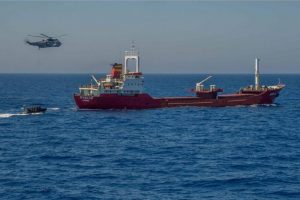
On December 6, 2016, the Council of the European Union and Foreign Ministers of NATO adopted a common set of proposals for EU-NATO cooperation. This follows from the Joint Declaration signed by EU leaders and the NATO Secretary General on July 2016. They agreed on a set of actions, including 42 concrete proposals for implementation in seven areas of cooperation: “Countering hybrid threats, operational cooperation including maritime issues; cyber security and defence, defence capabilities, parallel and coordinated exercises and defence, defence industry and research and security capacity-building.”15 Facing common challenges, the cooperation between European Union and NATO is more important than ever.
In particular, in December of 2016, the European Union and NATO agreed to enhance the cooperation and coordination between Operation Sea Guardian, a flexible maritime operation created by NATO that can perform a wide range of maritime security tasks,16 and EU NAVFOR MED Sophia, which started on June 22, 2015 and ceased operations July 27, 2017 and was formed to disrupt the business of human smuggling and trafficking in the Mediterranean and prevent loss of life at sea.17 The EU and NATO agreed to enhance the cooperation of these operations through information sharing, logistical support, and practical interaction.
Moreover, they agreed to build upon synergies between the EU operation and NATO in the Aegean. In support of the above goals, the EU and NATO will continue to make full use of the mechanism of Shared Awareness and Deconfliction in the Mediterranean (SHADE MED). SHADE MED is a forum where stakeholders, nations, or organizations that are affected by migratory phenomenon in the Mediterranean can meet, de-conflict, and coordinate their maritime security operations. This can be achieved by sharing situational awareness as well as assessing the evolution of trends and best practices.18 Furthermore, seminars will be held in the early part of 2017 to build on experiences from the fight against piracy in the Indian Ocean and on interactions in the Mediterranean.19
Integrating Mediterranean Maritime Security
And finally, why can maritime security in the Mediterranean be an integration pillar for the Common Security and Defense Policy? First, continued fiscal austerity could possibly impact the already limited defense expenditures in Southern Europe and give rise to new security concerns. Having an integrated approach can prevent and efficiently manage the existing threats in the Mediterranean which became even more challenging and complicated after the outbreak of the Arab Spring. The percentage of refugees and migrants who are trying to reach Europe by crossing Mediterranean has skyrocketed.20 Also, the incidents of terrorist activities in Mediterranean coasts, the threat of piracy attacks, as well as the fact that the Mediterranean has become a route of trafficking, drugs, arms, people, and money.
Another important factor which should increase efforts for further cooperation within the CSDP is the circulation of foreign fighters from Europe and elsewhere to the battlefields of the Levant and back. This phenomenon is not new, although the sheer size and widespread nature of the problem has given it a totally new dimension. Terrorist attacks and counterterrorism operations in France, Belgium, Denmark and Germany, highlight the nature of the threat.21 Terrorists could find a number of other ways to use the sea to carry out threats, such as using explosives to damage vessels, passengers and crews, or surrounding areas. They could also use vessels to transport explosives and other chemical, biological, or nuclear materials, including fissile material to use ashore.
Related to the external actors in the region, European Union member states should enhance their cooperation within the CDSP due to the declining interest of the United States in maintaining a strong presence in the Mediterranean due to competing priorities elsewhere. Washington has always put pressure on Europe to do more for its own security, and will likely increase this pressure in the future.22
From the other side, in June 2013, Russia announced that it would permanently maintain about a dozen warships in the Mediterranean for its national security. After a period of weakness and instability during the 1990s, the Federation is reappearing on the international scene as a major security player, claiming the status of a great power. The Russian Federation is affirming its global role and its activities in the Mediterranean as a part of a wider strategy shaped by a flowing interplay of internal and external influences. Russia has many ‘cards to play’ and it is playing some of them expertly.23
Russia, as the other actors in the region, is seeking some combination of economic and security gains in the Mediterranean while also trying to build or rebuild economic and security ties. According to General Philip Breedlove, then NATO’s top commander: “Tartus may also be part of a Russian effort to establish an anti-access/area denial (A2/AD) bubble over Syria, designed to prevent NATO forces from taking offensive action against Russia and its allies in the region.” These ambitions are illustrated by the Russia’s new Maritime Strategy, the Maritime Doctrine of Russian Federation 2020. This strategy includes the Mediterranean Sea, claiming that the aim of the Russian Federation is to re-establish a Russian Navy presence there.24
Conclusion
Based on these developments the European Union, a global maritime player, cannot remain uninvolved, and especially when its own interests and the peace and security of its citizens are affected directly by the situation in Mediterranean basin. The above examples shows that this threat cannot be tackled effectively when each member state is acting individually and there is a lack of compromise. Cooperation under the CSDP is linked to military deployment, and the CSDP creates fertile ground for cooperation and dialogue between the EU member states and cooperation with external actors.
The European Union as a security and defense actor cannot remain a distant viewer when security challenges in the Mediterranean are more rapidly emerging. Those threats do not concern only the countries of the “front line” but all the EU member states. Maritime security in the Mediterranean region can be an integration pillar for the Common Security and Defense Policy as recent events prove, although many more challenges are still yet to come.
Evmorfia-Chrysovalantou Seiti is a Ph.D. Candidate in the Department of Political Science and International Studies in University of Warsaw, Poland and she is working in a multinational corporation dealing with banking and financial services. She holds an MA in Political, Economic and International Relations in the Mediterranean from the University of the Aegean. Her primary areas of research are European Security, European Maritime Security Strategy towards Mediterranean and Euro-Mediterranean Politics.
References
1. Kristin Archick, ‘’The European Union: Current Challenges and Future Prospects’’, Congressional Research Service, June 2016, available at https://fas.org/sgp/crs/row/R44249.pdf
2. Daniele Keohane, ‘’The Paradox of EU Defence Policy’’, European Geostrategy, Vol. 8, No.9 (2016) available at http://www.europeangeostrategy.org/2016/03/the-paradox-of-eu-defence-policy/
3. Available at https://fas.org/sgp/crs/row/R44249.pdf
4. Ian O. Lesser, ‘’The United States and the Future of Mediterranean Security: Reflections from GMF’s Mediterranean Strategy Group’’, Policy Brief Mediterranean Policy Program, April 2015, The German Marshall Fund of the United States
5. ‘’Maritime Security in the Mediterranean: Challenges and Policy Responses’’, Security and Defence Agenda Discussion Paper, June 2011 available at https://www.files.ethz.ch/isn/130716/Maritime_Discussion_Paper_FINAL.pdf
6. ‘’ISIS video appears to show beheadings of Egyptian Coptic Christians in Libya’’, CNN, February 16, 2015 available at http://edition.cnn.com/2015/02/15/middleeast/isis-video-beheadings-christians/
7. Mark William Lowe, ‘’MSS in depth: The Threat of Maritime Terrorism’’, Med Security Summit, September 16-18, 2015 available at http://www.medsecuritysummit.com/wp-content/uploads/MSS-InDepth-May-2015.pdf
8. Mark William Lowe, ‘’MSS in depth: The Threat of Maritime Terrorism’’, Med Security Summit, September 16-18, 2015 available at http://www.medsecuritysummit.com/wp-content/uploads/MSS-InDepth-May-2015.pdf
9. Ian O. Lesser, ‘’The United States and the Future of Mediterranean Security: Reflections from GMF’s Mediterranean Strategy Group’’, Policy Brief Mediterranean Policy Program, April 2015, The German Marshall Fund of the United States
10. Ian O. Lesser, ‘’The United States and the Future of Mediterranean Security: Reflections from GMF’s Mediterranean Strategy Group’’, Policy Brief Mediterranean Policy Program, April 2015, The German Marshall Fund of the United StatesClandestino Project, Final Report, November 23, 2009, available at http://www.gla.ac.uk/media/media_147171_en.pdf
11. Clandestino Project, Final Report, November 23, 2009, available at http://www.gla.ac.uk/media/media_147171_en.pdf
12. Jean Edmond Randriananteinaina, ‘’Maritime Piracy and Armed Robbery Against Ships: Exploring the Legal and the Operational Solutions. The case of Madagascar’’, Division for Ocean Affairs and the Law of the Sea Office for Legal Affairs , the United Nations, New York 2013, available at http://www.un.org/Depts/los/nippon/unnff_programme_home/fellows_pages/fellows_papers/Randrianantenaina_1213_Madagascar.pdf
13. ‘’West Africa drug trade, new transit hub for cocaine trafficking fuels corruption’’, United Nations, available at http://www.un.org/en/events/tenstories/08/westafrica.shtml
14. ‘’EU Security and Defence Package’’, European Union External Action, December 2016, available at https://eeas.europa.eu/headquarters/headquarters-homepage/16693/eu-security-and-defence-package_en
15. ‘’EU NATO start new era of cooperation’’ European Union External Action, December 2016, available at https://eeas.europa.eu/headquarters/headquarters-homepage_en/16643/EU%20and%20NATO%20start%20new%20era%20of%20cooperation
16. ‘’Operation Sea Guardian’’, North Atlantic Treaty Organization, October 2016, available at http://www.nato.int/cps/en/natohq/topics_136233.htm
17. ‘’EU NAVFOR MED Operation Sophia’’, European Union External Action Service, September 2016, available at https://eeas.europa.eu/csdp-missions-operations/eunavfor-med/12193_en
18. ‘’Shared Awareness and Deconfliction in the Mediterranean’’, available at http://eeas.europa.eu/archives/docs/csdp/missions-and-operations/eunavfor-med/shade/pdf/2015/terms_of_reference.pdf
19. ‘’EU-NATO Cooperation: Council adopt conclusions to implement Joint Declaration’’, Council of the European Union, December 2016, available at http://dsms.consilium.europa.eu/952/Actions/Newsletter.aspx?messageid=9551&customerid=36699&password=enc_52517859324E68794E576B6E_enc
20. ‘’UN Refugee Agency: 2016 is the deadliest year for refugees crossing to Europe via Central Mediterranean’’, available at https://refugeesmigrants.un.org/un-refugee-agency-2016-deadliest-year-refugees-crossing-europe-central-mediterranean
21. Boutin B., Chanzal G., Dorsey J., Jegerings M., Paulussen C., Pohl J., Reed A., Zavagli S., ‘’The Foreign Fighters Phenomenon in the European Union: Profiles, Threats & Policies’’, International Centre for Counter -Terrorism- The Hague-Research Paper April 2016
22. Michael Codner ‘’The Security of the Mediterranean Sea’’, LSE Ideas, A Strategy of Southern Europe, Special Report 2013, available at https://sarahwolffeu.files.wordpress.com/2013/10/lse_ideas_report_southerneur_lores.pdf
23. Rajan Menon and S. Enders Wimbush, ‘New players in the Mediterranean’, Mediterranean Paper Series 2010, The German Marshall Fund of the United States, May 2010
24. Edward Delman, ‘’The link between Putin’s military campaigns in Syria and Ukraine,The Atlantic, http://www.theatlantic.com/international/archive/2015/10/navy-base-syria-crimea-putin/408694/
Featured Image: The boarding team from Spanish EU-Naval Force warship ESPS Rayo board a suspicious skiff. (EUNAVFOR)

